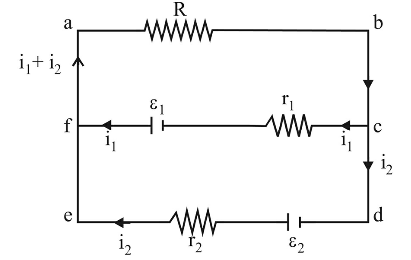Current Electricity
- In producing chlorine through electrolysis, 100 watt power at 125 V is being consumed. How much chlorine per minute is liberated? E.C.E. of chlorine is 0.367 × 10–6 kg/ coulomb.
-
View Hint View Answer Discuss in Forum
Power = V × I
I = Power = 100 V 125
E.C.E. of chlorine is 0.367 × 10–6 kg/coulombCharge passing in one minute = 100 × 60 = 48 coulomb 125
Chlorine precipitated = 0.367 × 10–6 × 48
17.6 × 10–6 kg
= 17.6 mgCorrect Option: D
Power = V × I
I = Power = 100 V 125
E.C.E. of chlorine is 0.367 × 10–6 kg/coulombCharge passing in one minute = 100 × 60 = 48 coulomb 125
Chlorine precipitated = 0.367 × 10–6 × 48
17.6 × 10–6 kg
= 17.6 mg
- A steady current of 1.5 amp flows through a copper voltameter for 10 minutes. If the electrochemical equivalent of copper is 30 × 10–5 g coulomb–1, the mass of copper deposited on the electrode will be
-
View Hint View Answer Discuss in Forum
We have, m = ZIt
where, Z is the electrochemical equivalent of copper.
⇒ m = 30 x 10-5 x 1.5 x 10 x 60
= 0.27 gm.Correct Option: C
We have, m = ZIt
where, Z is the electrochemical equivalent of copper.
⇒ m = 30 x 10-5 x 1.5 x 10 x 60
= 0.27 gm.
- A cell can be balanced against 110 cm and 100 cm of potentiometer wire, respectively with and without being short circuited through a resistance of 10Ω. Its internal resistance is
-
View Hint View Answer Discuss in Forum
Here
E > ER R + r
hence the lengths 110 cm and 100 cm are interchanged.
Without being short-circuited through R, only the battery E is balanced.E = V × l1 = V × 110 ................(i) L L When R is connected across E, Ri = V × l2 L Or, R 
E 
= V × 100..............(ii) R + r L
Dividing (i) by (ii), we getR + r = 110 R 100
or, 100 R + 100 r = 110 RCorrect Option: A
Here
E > ER R + r
hence the lengths 110 cm and 100 cm are interchanged.
Without being short-circuited through R, only the battery E is balanced.E = V × l1 = V × 110 ................(i) L L When R is connected across E, Ri = V × l2 L Or, R 
E 
= V × 100..............(ii) R + r L
Dividing (i) by (ii), we getR + r = 110 R 100
or, 100 R + 100 r = 110 R
- A student measures the terminal potential difference (V) of a cell (of emf E and internal resistance r) as a function of the current (I) flowing through it. The slope and intercept, of the graph between V and I, then, respectively, equal:
-
View Hint View Answer Discuss in Forum
The terminal potential difference of a cell is given by V + Ir = E
V = VA – VB
or V = E – Ir
⇒ dV/dI = -r,
Also for, i = 0 then V = E
∴slope = – r, intercept = ECorrect Option: A
The terminal potential difference of a cell is given by V + Ir = E
V = VA – VB
or V = E – Ir
⇒ dV/dI = -r,
Also for, i = 0 then V = E
∴slope = – r, intercept = E
- See the electric circuit shown in the figure.

Which of the following equations is a correct equation for it?
-
View Hint View Answer Discuss in Forum

Applying Kirchhoff ’s rule in loop abcfa
ε1 – (i1 + i2) R – i1 r1 = 0.Correct Option: D

Applying Kirchhoff ’s rule in loop abcfa
ε1 – (i1 + i2) R – i1 r1 = 0.

